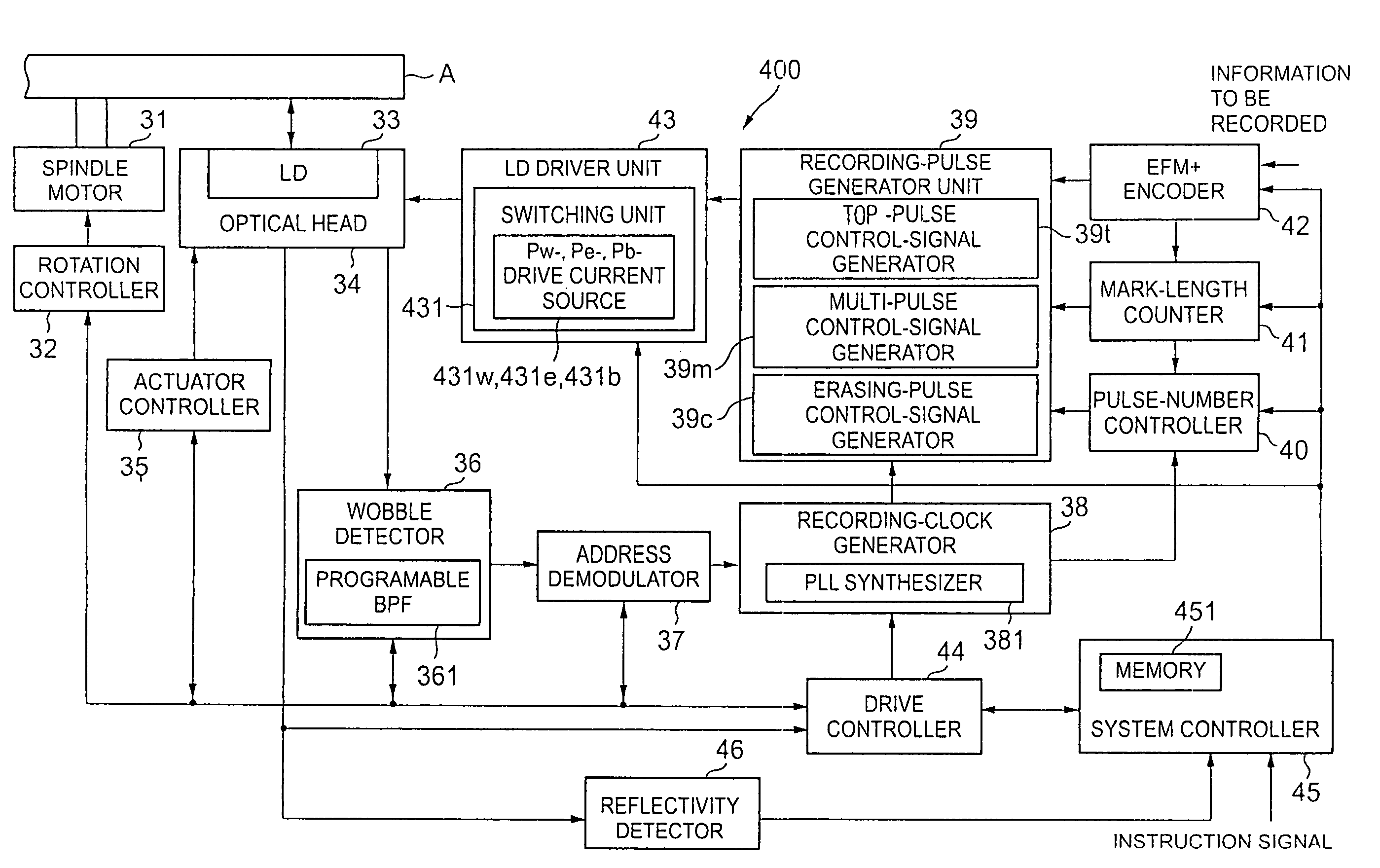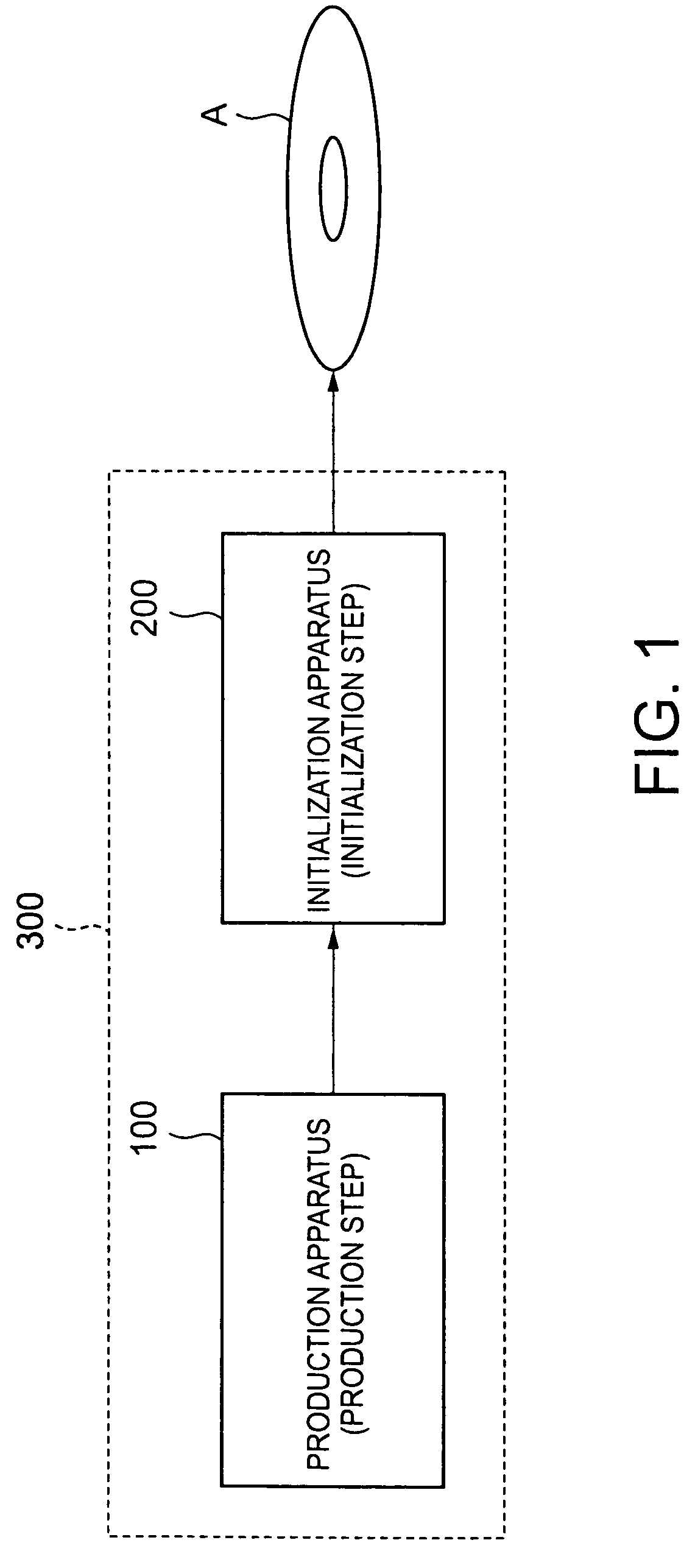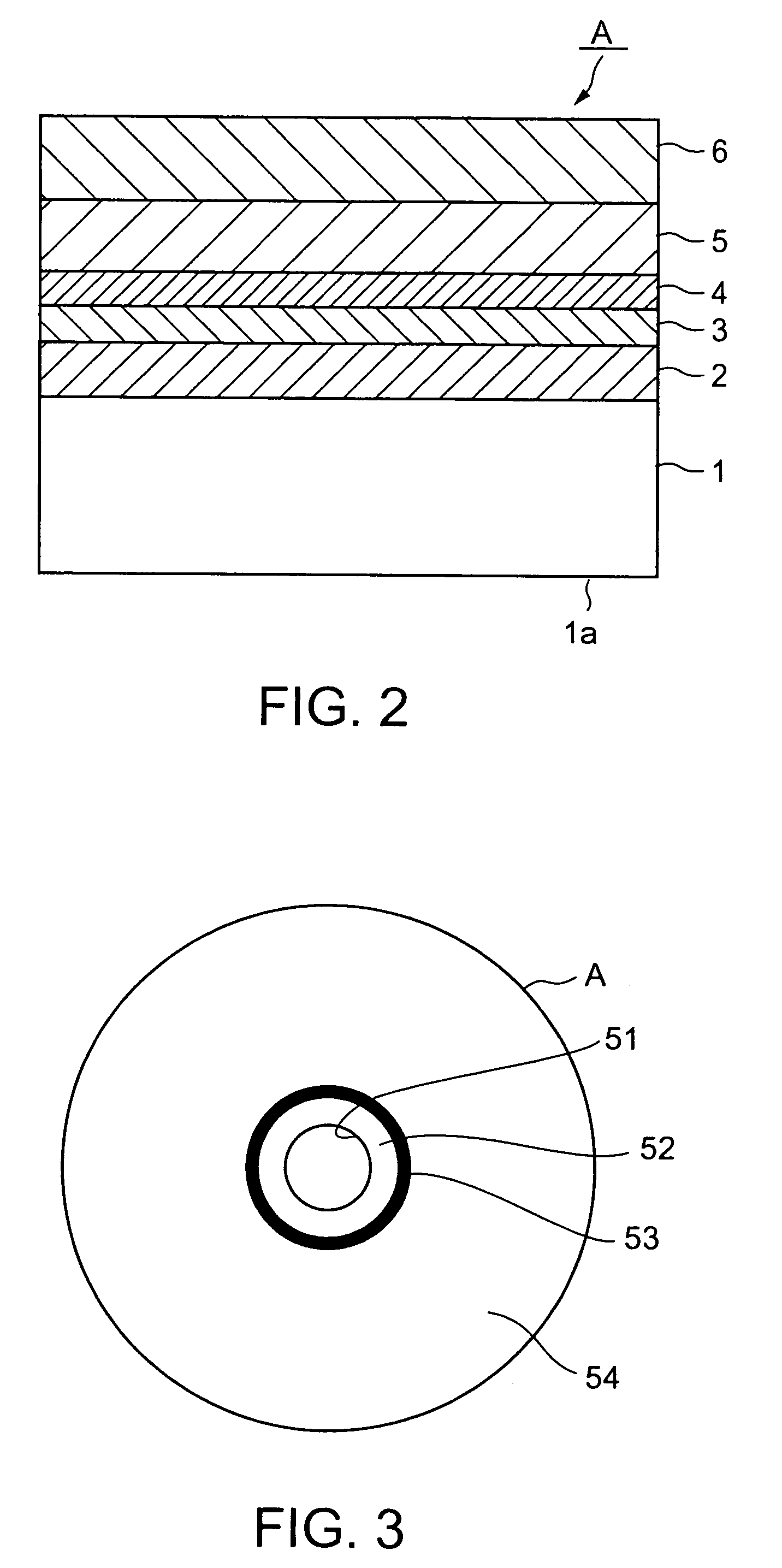Optical recording method, optical recording apparatus and optical storage medium
a recording method and optical recording technology, applied in the field of optical recording methods, optical recording apparatuses and optical storage media, can solve the problems of lowering the recording characteristics at initial recording, the proposed optical recording method and the optical storage medium cannot achieve sufficient overwrite characteristics, and the method cannot provide acceptable recording characteristics, etc., to achieve excellent overwrite characteristics and high linear-speed optical recording
- Summary
- Abstract
- Description
- Claims
- Application Information
AI Technical Summary
Benefits of technology
Problems solved by technology
Method used
Image
Examples
embodiment sample a-1
[0105]Several layers which will be disclosed later, were formed on a on a substrate 1 made of a polycarbonate resin with 120 mm in diameter and 0.6 mm in thickness. Grooves were formed on the substrate 1 at 0. 74 μm in track pitch, with 25 nm in groove depth and about 40:60 in width ratio of groove to land. The grooves stuck out when viewed from an incident direction of a laser beam in recording, reproduction or erasure.
[0106]After a vacuum chamber was exhausted up to 3×10−4 Pa, a 70 nm-thick first protective layer 2 was formed on the substrate 1 by high-frequency magnetron sputtering with a target of ZnS added with 20-mol % SiO2 at 2×10−1 Pa in Ar-gas atmosphere.
[0107]Formed on the first protective layer 2, in order, were a 16 nm-thick recording layer 3 with a target of an alloy of 4 elements Ge—In—Sb—Te, a 16 nm-thick second protective layer 4 of the same material as the first protective layer 2, and a 120 nm-thick reflective layer 5 with a target of Ag—Pd—Cu.
[0108]The substrate 1...
embodiment sample a-2
[0116]The optical storage medium A in the embodiment sample A-2 was identical to that of the embodiment sample A-1. Recording was conducted and evaluated with the same recording requirements except change in erasing power Pe to 3.8 [mW]. Results were 17.4 in R0, and 17.5 in R1 after irradiated once with a laser beam having the erasing power Pe=3.8 [mW] (R1 / R0=1.006).
[0117]Initial characteristics and overwrite recording characteristics were as shown in FIG. 17: 6.8% in DOW-0 jitter, 8.6% in DOW-1 jitter, and 7.9% in DOW-9 jitter. Moreover, although not shown, DOW-10000 jitter was 9.2%. Thus, the embodiment sample A-2 was always stable in characteristics after overwriting, with excellent recording characteristics, like the embodiment sample A-1.
embodiment sample a-3
[0118]The optical storage medium A in the embodiment sample A-3 was identical to that of the embodiment sample A-1. Recording was conducted and evaluated with the same recording requirements except change in erasing power Pe to 5.6 [mW]. Results were 17.4 in R0, and 17.9 in R1 after irradiated once with a laser beam having the erasing power Pe=5.6 [mW] (R1 / R0=1.029).
[0119]Initial characteristics and overwrite recording characteristics were as shown in FIG. 17: 7.0% in DOW-0 jitter, 8.7% in DOW-1 jitter, and 8.4% in DOW-9 jitter. Moreover, although not shown, DOW-10000 jitter was 9.5%. Thus, the embodiment sample A-3 was always stable in characteristics after overwriting, with excellent recording characteristics, like the embodiment sample A-1.
Comparative Sample A-4
[0120]The optical storage medium A in the comparative sample A-4 was identical to that of the embodiment sample A-1. Recording was conducted and evaluated with the same recording requirements except change in erasing power...
PUM
| Property | Measurement | Unit |
|---|---|---|
| thickness | aaaaa | aaaaa |
| thickness | aaaaa | aaaaa |
| thickness | aaaaa | aaaaa |
Abstract
Description
Claims
Application Information
 Login to View More
Login to View More - R&D
- Intellectual Property
- Life Sciences
- Materials
- Tech Scout
- Unparalleled Data Quality
- Higher Quality Content
- 60% Fewer Hallucinations
Browse by: Latest US Patents, China's latest patents, Technical Efficacy Thesaurus, Application Domain, Technology Topic, Popular Technical Reports.
© 2025 PatSnap. All rights reserved.Legal|Privacy policy|Modern Slavery Act Transparency Statement|Sitemap|About US| Contact US: help@patsnap.com



